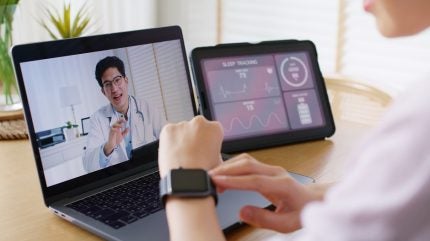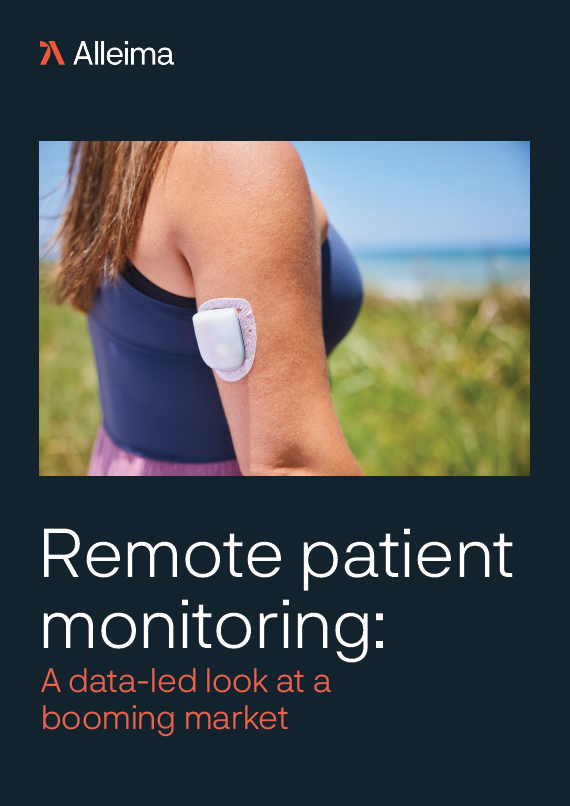
Strokes remain a leading cause of long-term disability worldwide, affecting millions of individuals each year. The journey to recovery is often arduous, requiring constant monitoring and support.
However, recent advances in at-home monitoring technologies are changing how stroke patients manage their health and rehabilitation, providing them with a vital opportunity for continuous care and health monitoring from the comfort of their homes.
According to the World Health Organization (WHO), 15 million people worldwide suffer a stroke each year. Of these, five million are left with a permanent disability. Strokes are uncommon in people under 40 years old – but when it does occur, the main cause is high blood pressure. With ageing global populations and lifestyle factors contributing to higher blood pressure, there has been a significant rise in people at risk of a stroke.
The evolution of at-home monitoring technologies
Traditionally, stroke rehabilitation required frequent visits to healthcare facilities, which posed logistical and financial burdens for patients and caregivers. The growing prevalence of telemedicine and remote monitoring devices is ensuring that high-quality care is more accessible to everyone who needs it.
One of the significant breakthroughs is the integration of wearable devices and smart home technologies. These devices can track a wide array of health metrics such as heart rate, blood pressure, and mobility patterns, providing real-time data to healthcare providers. According to GlobalData, the remote patient monitoring market will be worth $760m by 2030, up from $548.9m in 2020 at a compound annual growth rate (CAGR) of 3.3%.
Wearable devices such as smartwatches and fitness trackers have evolved beyond simple step counters. Equipped with sophisticated sensors, these devices monitor vital signs and detect irregularities that might indicate potential health issues.
For instance, devices that integrate electrocardiograms (ECGs) and monitor blood oxygen levels – which are becoming increasingly common for the latest generations of smartwatches – provide critical data that can alert patients and healthcare professionals to signs of distress that could lead to a stroke.
Smart home technologies – such as sensors and voice-activated assistants – can also play a role in stroke recovery, as they can be used to monitor daily activities, detect falls, and remind patients to take their medication.
Telehealth platforms offer remote consultations, enabling regular check-ins without the need for physical travel. A study published in the Journal of Telemedicine and Telecare in 2023 highlighted that telehealth interventions for stroke patients resulted in a 25% reduction in hospital readmissions, underscoring its efficacy in providing continuous care.
The future of monitoring devices for stroke patients
Looking ahead, innovations in artificial intelligence (AI) and machine learning (ML) are expected to further enhance the capabilities of monitoring systems, providing even more accurate and personalised care. For example, AI algorithms can analyse patterns in patient data to predict potential health issues before they arise, enabling preemptive interventions.
According to GlobaData’s product pipeline database, there are multiple innovative medical devices under development specifically designed for stroke patients. One notable device in early development is a system that monitors a stroke patient’s cerebrovascular condition. The device identifies the circulating debris, monitors the brain irrigation and neurological activity, and images the intra-cerebral blood flows.
As monitoring devices for stroke patients become more advanced, OEMs are increasingly outsourcing the design and development of complex components.
Alleima, a partner for life-changing medical solutions, develops and manufactures medical wires that play a significant role enhancing monitoring devices, including wearable sensors and implantable devices that continuously monitor critical health metrics. These ultra-thin, flexible wires for sensors track vital signs such as heart rate, blood pressure, and oxygen levels, which is crucial for detecting early signs of complications in stroke patients, enabling timely interventions and adjustments in their care plans.
With its broad range of core and customized capabilities, Alleima also leads the development of smaller, smarter devices that are less invasive and more comfortable for patients to wear or have implanted. In partnering with leading OEMs and Medical Device companies, Alleima’s development and manufacturing expertise contributes to these devices to be more discreet and efficient while providing accurate, real-time data to healthcare providers.
By integrating Alleima’s advanced wire technology, these monitoring devices can offer enhanced performance, durability, and patient comfort. This integration not only improves the quality of life for stroke survivors but also allows for more effective and personalised treatment plans, fostering better long-term recovery outcomes.
For more information about the medical wire offered by Alleima and its other capabilities, download the document below.



